Earthjustice stands with western Alaska tribes and families after severe storms devastated entire communities, displacing more than 1,000 residents just before winter. Learn more and how you can help.
Where a Logging Camp Once Stood, a Center for Healing Takes Root
In Kake, Alaska, protecting a temperate rainforest means protecting a way of life.
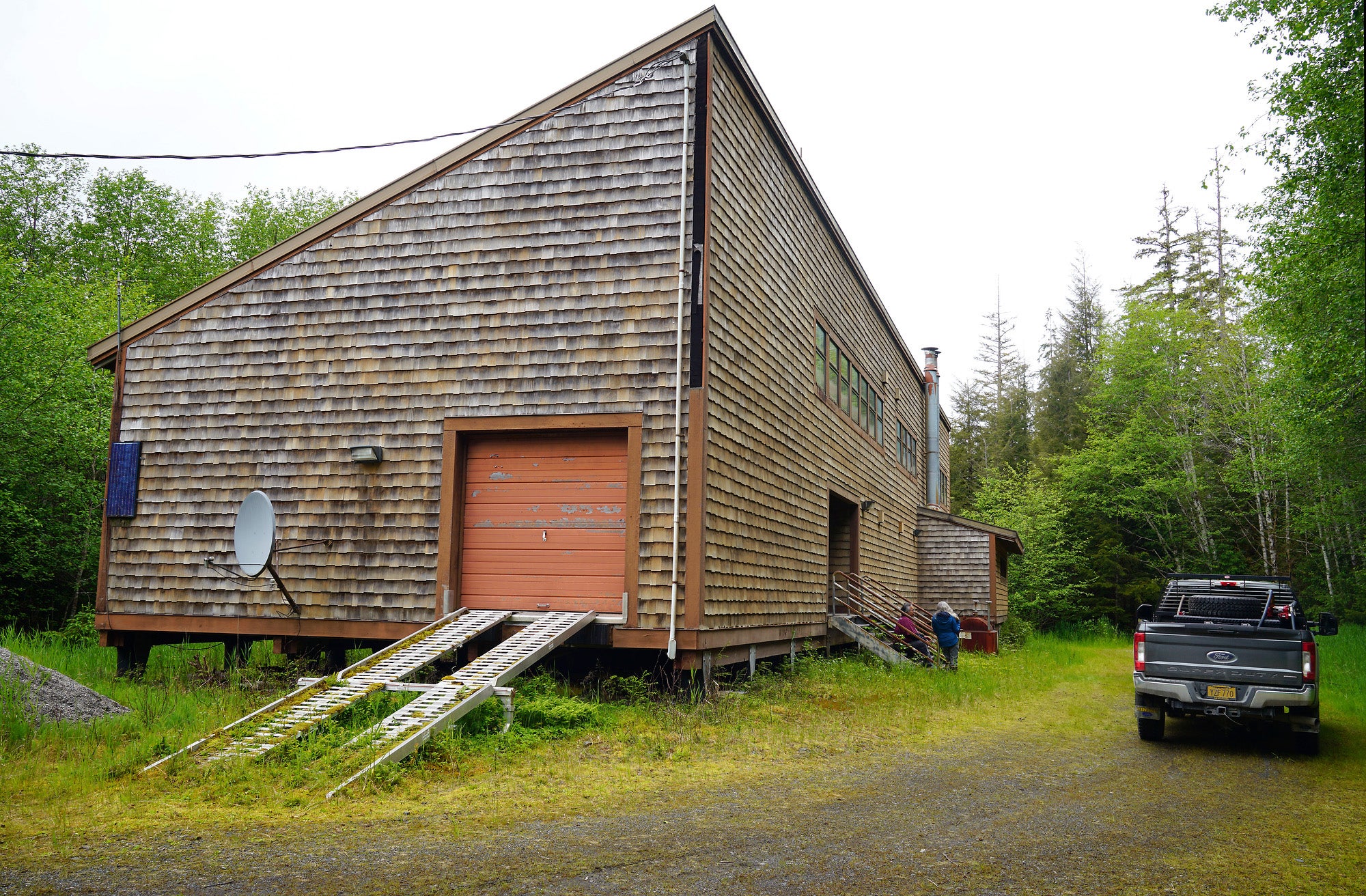
This page was published 2 years ago. Find the latest on Earthjustice’s work.
Follow a ribbon of unpaved road through Tongass National Forest in Southeast Alaska, and eventually you’ll come to an empty two-story building that once served as a bunkhouse for Forest Service personnel. Clean, well-maintained, and in excellent condition, it was once “the Taj Mahal of Forest Service administration buildings,” as Tribal leader Joel Jackson jokingly refers to it.
While there was once more of a demand for logging crew accommodations in this national forest, a decades-long fight over the fate of the Tongass resulted in an important win earlier this year. In January 2023, President Biden restored protections against industrial logging to 9 million acres of the forest. For many years before that, Earthjustice represented Kake, an Alaska Native village, in litigation to defend the trees and a way of life that depends on them.
Now Jackson, who serves as President of the Tribal Council of the Organized Village of Kake (OVK), has a vision that would transform the former bunkhouse from a place built for people who aided in the destruction of the Tongass into somewhere that will help Alaska Native people reconnect with their culture and the forest.
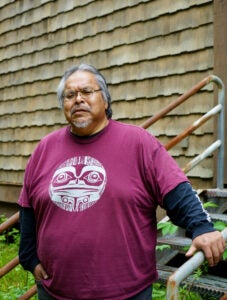
President Joel Jackson of the Organized Village of Kake is a Tribal leader with a vision for cultural healing and reconnection. (Rebecca Bowe / Earthjustice)
On this foggy day in early June, a hulking pickup truck has carried four of us through dense temperate rainforest for hours. President Jackson, 67, rides in the passenger seat. His brother Mike Jackson, 71, who is OVK’s Transportation Director and a former magistrate judge for the State of Alaska, drives while I ride in the backseat with another Earthjustice colleague.
According to what you’d find on a map in 2023, we’re traveling east on Kupreanof Island along the Kake Access Road through the Tongass National Forest — but more accurately, we’re on the ancestral homelands of the Tlingit people, near Keex’ Kwan (Kake).
As we drive, the Jackson brothers tell stories. Their tales thread through the past, present, and future because as they note, the Tlingit people have always been here and always will be, with a continually evolving culture currently focused on reconnecting to tradition, rebuilding Tribal strength, and healing from past scars.
As Kake recedes into the rearview, we pass stands of densely crowded trees — natural regeneration that sprang up in the wake of a timber clear-cut from the 1960s, prior to any environmentally protective laws being on the books. These formerly logged areas are biodiversity dead zones compared with old-growth forests that remained untouched, Mike Jackson explains. In the early 1970s, he himself took a job as a Forest Service technician, but ultimately couldn’t stomach the work.
“When I found out their plans for logging, I left,” he tells us. “It went against everything we believe in.”
President Jackson, who worked in construction decades ago, says he too once served on a crew building logging roads. Yet in the years that followed, he went on to defend the Tongass National Forest from logging. Particularly during the Trump years, in his role at the helm of OVK, he became a prominent opponent to the federal government’s attack on the Roadless Rule in Alaska. That rollback would have opened vast swaths of the forest to clearcut logging.
“What drives me to do this work is making sure that our people have a voice, to make sure that we are heard,” he says.
When President Joe Biden finally restored federal protection to the Tongass in January of 2023, President Jackson emailed this reaction statement for a press release: “The old-growth timber is a carbon sink, one of the best in the world. It’s important to OUR WAY OF LIFE — the streams, salmon, deer, and all the forest animals and plants.”
Our journey is punctuated with wildlife sightings. Moose and black bears dart across the road on several occasions. At one point we spot a deer trailed by her fawn. The baby deer crouches down along the side of the road momentarily, its tiny frame bespeckled with soft white patches.
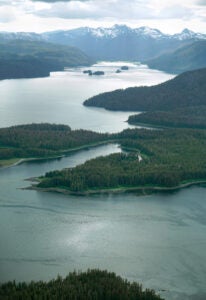
Southeast Alaska is shaped by the Tongass Nationa Forest, a watery landscape of forested islands. (Rebecca Bowe / Earthjustice)
After 52 miles, we’ve reached the abandoned logging bunkhouse. President Jackson intends to convert it into a cultural healing center for his community and others throughout Southeast Alaska.
“I’ve been thinking about it for the last 15 to 20 years,” he explains when asked what spurred the idea. He’d long dreamed of establishing a place where Alaska Native people from throughout Southeast Alaska who are battling addiction could go to reconnect with their culture and traditional lifeways, as a process of moving past the intergenerational trauma they might be experiencing.
It was only recently that President Jackson realized this spot could hold the project he’d long imagined. As it happens, it’s situated near a beach where people could gather, fish or collect traditional foods, and it’s also near a location that is regarded as a sacred site to the Tribe. There’s also a gravel lot nearby — previously the site of a logging industry man camp — where he imagines a cluster of tiny homes could be located to house staff for the healing center.
The cultural healing center will build on work that OVK is already doing. For the past 35 years, the village has hosted weeklong training programs for young people known as Culture Camp. Participants learn about traditional cultural practices like harvesting and processing traditional foods, carving, and hunting — all of which hinge on the ongoing existence of an intact forest ecosystem.
While the program has become a beloved tradition in the village, the first Culture Camp arose from tragic circumstances. A rash of suicides shook the small community to its core, causing village leaders to come together and search for some way to address the struggles their young people faced.
“To get to the root of the problem, you’ve got to get real. You can’t expect to heal if you don’t get to what’s bothering you,” President Jackson says. “And if you don’t get to it, you’ll never heal. And you’ll always be a victim.” He adds: “There’s been so much talk about intergenerational trauma and other things that affect people. It’s good that we talk about it… but now is the time that we need to start healing our people.”
That intergenerational trauma harkens back to colonization and the era when Alaska Native and First Nations people were sent to boarding schools by European outsiders seeking to take over their lands and eradicate their culture. President Jackson also views the logging boom in the 1970s and ‘80s as contributing to the harm. It brought a temporary boost in employment, but when the trees were cut down, the jobs went with them.
“After that was over then our little community, half the community, left,” Jackson says. “And now we’re left with 80% to 85% unemployment. And what happens when you get into a situation like that is people turn to … things that aren’t good for them.”
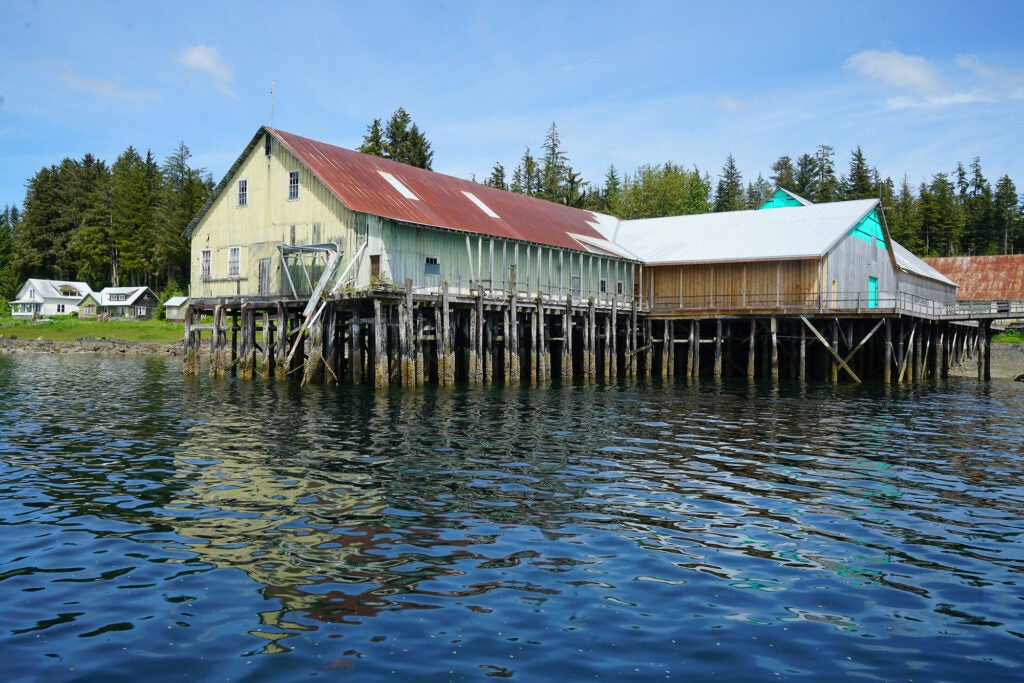
The waterfront in Kake, an Alaska Native village with a population of 550. (Rebecca Bowe / Earthjustice)
Though industrial logging is now off the table in much of the Tongass, other threats loom. President Jackson also opposed the construction of the Kake Access Road we’ve been driving on, which was completed in 2021 to create an unpaved ribbon of narrow highway that leads to a boat ramp at Frederick Sound. The majority of Kake residents opposed the road project, but the $40 million endeavor was greenlighted anyway.
Alaska State Sen. Bert Stedman put forth the argument that the road was needed to help transport Kake residents in need of medical care. Yet as President Jackson points out, medical emergencies in Kake were already well handled by medivac airlifting people to care facilities. Kake’s requests for Tribal consultation went unanswered, while Earthjustice aided the Tribal government in submitting comments challenging the road project when it was proposed.
President Jackson and his brother remain wary of ulterior motives behind the road plan and are concerned it could open the doors to new mining proposals. Already, Indigenous communities in Southeast Alaska are burdened by toxic runoff from mines in neighboring British Columbia, which is impacting three major salmon rivers and threatening food security.
Yet as long as the road is here, the Jackson brothers say the Tribe will do their best to ensure it’s safe to use. The Forest Service and the state were not taking responsibility, so the Tribe took on its upkeep.
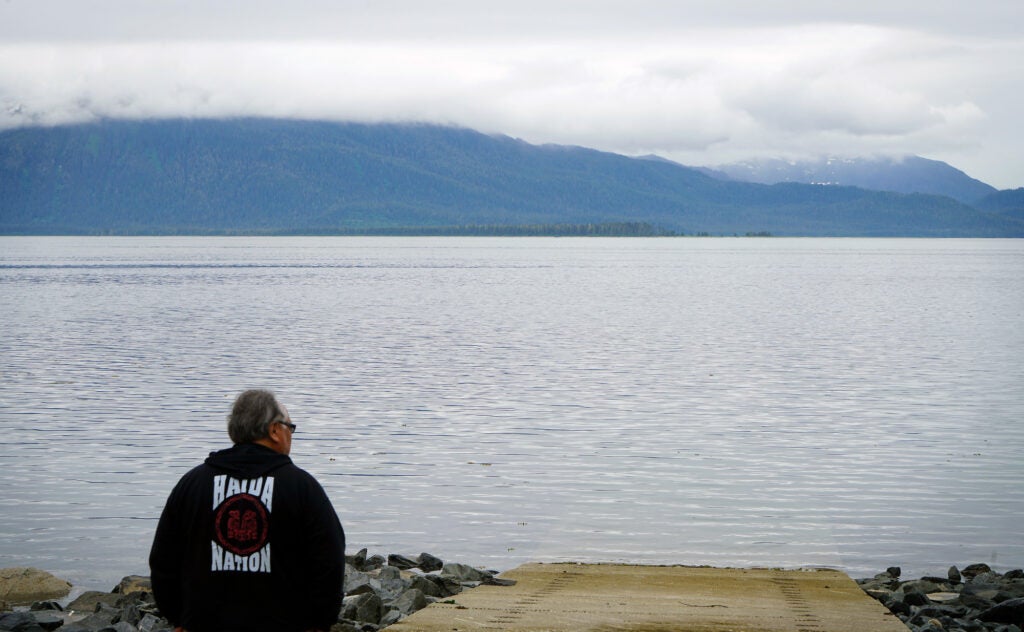
Mike Jackson, Joel’s brother, stands at the water’s edge on Kupreanof Island. (Rebecca Bowe / Earthjustice)
For now, President Jackson feels hopeful about the healing center plan. The Forest Service has already agreed to turn the building over to OVK for this purpose, and Jackson has convened an advisory committee to help. The core concept is clear — to ground people in their traditional culture, “so that they understand where they come from, who their clan is, and our Tribal values. … Here, we still try to practice taking care of each other. That is a big part of why we’re still here — because we do take care of each other.”
Part of what gives the tiny village of Keex’ Kwan (Kake) its sense of place is the untold time and energy its leaders have invested into keeping their Indigenous cultural practices alive and passing them onto the next generation. Forest clearcuts go against their values because the forest is integral to their identity as Indigenous people and offers infinite sustenance, shaping a way of life that is deeply connected to the land.
President Jackson put it this way: “If I get too stressed … I’ll walk on the beach or walk down a trail. And find a place to just sit. I feel that I am in a safe spot. And I feel like whatever is bothering me, and whatever I need to get over it, is there. The smell, the sounds… just getting grounded in my ancestral lands. I know — and our people say it all the time — our ancestors are standing behind me. I feel them. Ever since I started this work.”
Opened in 1978, our Alaska regional office works to safeguard public lands, waters, and wildlife from destructive oil and gas drilling, mining, and logging, and to protect the region's marine and coastal ecosystems.